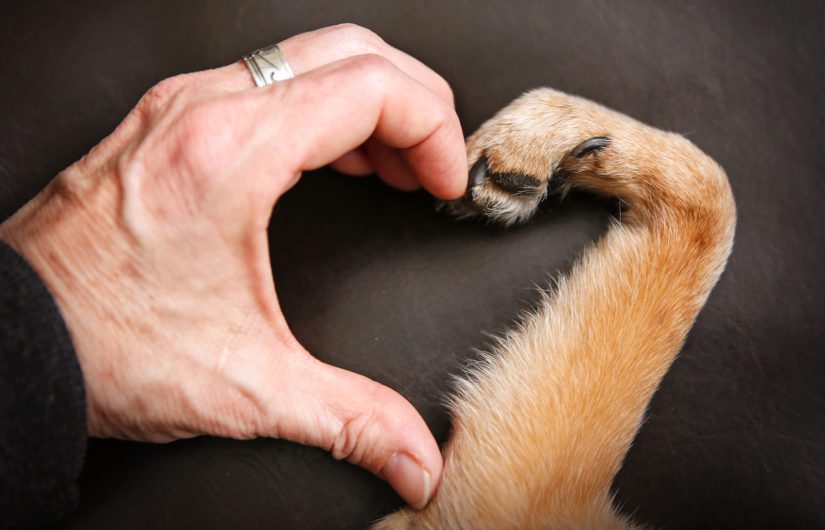Question: My new rescue dog seems to only care about me when I have food in my hand. How can I get her to love and bond with me?
Many rescue dogs, dogs from puppy mills and dogs with poor socialization during puppyhood have bonding issues with people. They will often see their guardians, especially in the first few weeks, as merely a resource to get what they need – food, water, protection, bathroom breaks and maybe play time – but otherwise may not derive any real pleasure from humans. This can be very frustrating and disappointing. Fortunately, there are some things you can do to help speed up a connection with your dog and it is through stimulating the production of the “love drug,” or, more accurately, the hormone oxytocin we naturally produce.

When you fall in love, your body produces high levels of oxytocin. Oxytocin is a “feel good” hormone that stimulates the bonding and attachment process between people. You especially see this in the bond between a mother and her infant. Our response to those doe-eyed puppies or kittens – practically all neonatal animals we go “aww” over – is also the result of oxytocin chemically causing us to attach and care for them. But the oxytocin flows both ways! New research reveals dogs also produce this hormone when they feel trust and a bond with people. The oxytocin production is stimulated when we make eye contact, but not staring. A stare is interpreted as a threat in the dog world, but gazing into the eyes of your dog makes a connection that builds trust.

If your dog is a rescue, there is a high probability she has some trust issues with people. There is a lot you need to do to create a trusting environment but try adding eye gazing. Then progress with gentle touches and strokes to help further stimulate oxytocin release. Be patient. It may take weeks or months to build the emotional and chemical bond between you.
For more tips on dog care and behaviour, check out our dog pet care section.
Get updates from the BC SPCA
Want to receive more pet tips like this, right in your inbox? Use the form below to subscribe for updates.
